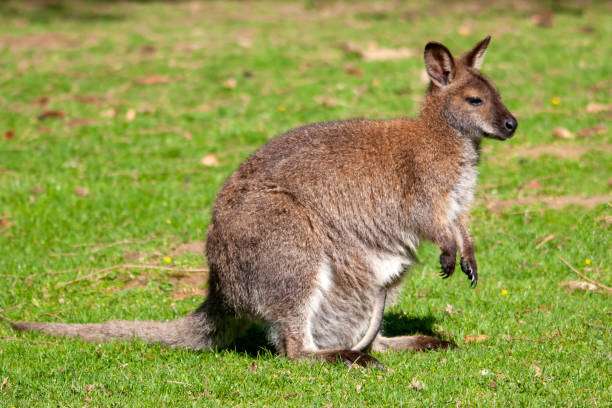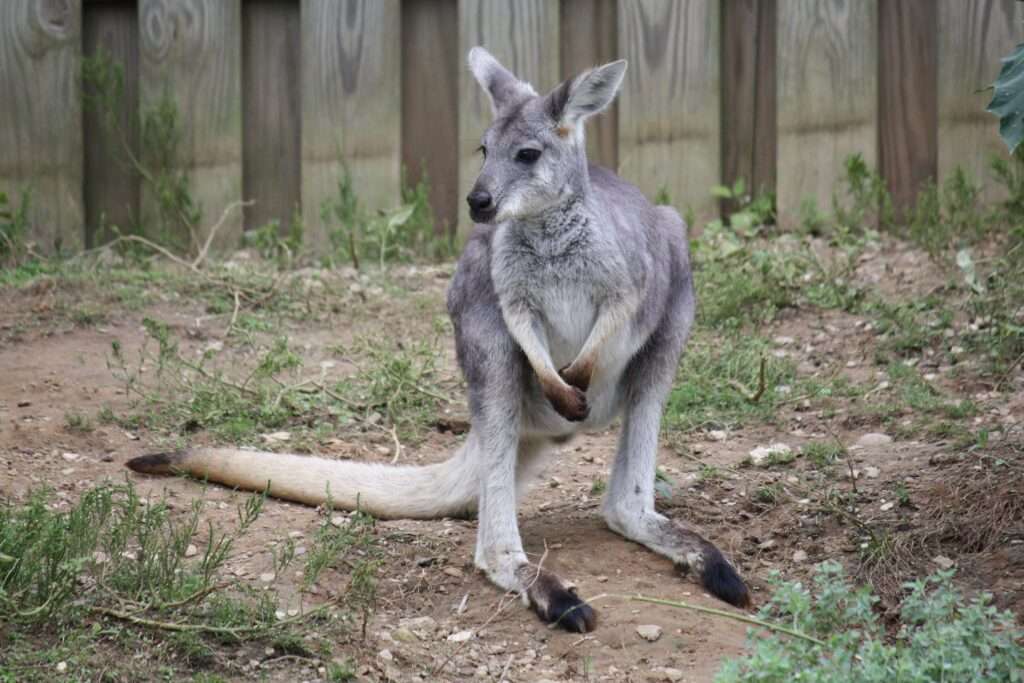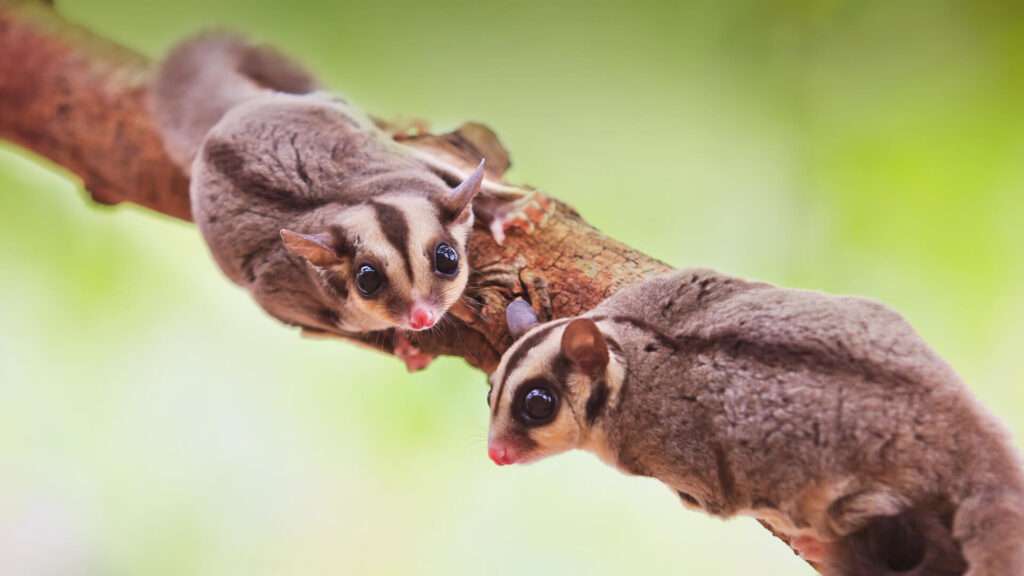
Description
Scientific name: Notamacropus rufogriseus
Life span: Up to 12- 15 years
The Bennett’s wallaby is a marsupial mammal that keeps its young ones in its pouch. They are also known as red-necked wallabies. Wallaby has a body length of about 80- 90 cm with a 63 cm long tail. Males may weigh up to 20 kg, while females top out at 14 kg. Wallabies have soft fur and do not have a black strip at their back. They are reddish-brown on the shoulders and have a grayish-brown upper body. The posterior region of their body is a pale gray. They have large hind limbs with black tips. They feed on grass, roots, weeds, tree leaves, and seeds.
Native Region/Habitat
Bennett’s wallabies are endemic to New Zealand, Eastern Australia, the United Kingdom, and Tasmania. They are mostly found in grassland and bushlands.
As Pet

Behavior/Temperament
Wallabies spend most of their time alone, although they will group when there are enough resources available, such as water, food, and shelter. They exhibit social hierarchies when they do form groups, just like other wallaby species. Wallabies may be the most often seen animal in zoos and are easy to reproduce in captivity. When kept as primarily outside animals, wallabies can make good pets when compared to other unique exotic animals. They are social animals and demand good care when kept as a pet. In captivity, sometimes it is difficult to handle them.
Baby wallabies prefer to live indoors while adults should be kept in a large enclosure with enough room for their high level of activity.
Care/Grooming
Wallabies in their infancy should be kept in specially designed suspended, thick pouches with an inner lining composed of cotton and wool. This pouch has to be cleaned frequently. They are highly susceptible to stress, and their cage should provide both security and mental stimulation. Stressors might include a lack of cover, feeding stations, and resting places. The enclosure must be cleaned properly on a regular basis. Droppings and food scraps need to be frequently cleared to avoid infection and contamination from other pests and rodents. To minimize infection, food should be provided most often in a suspended feeding dish and hopper.
Table





